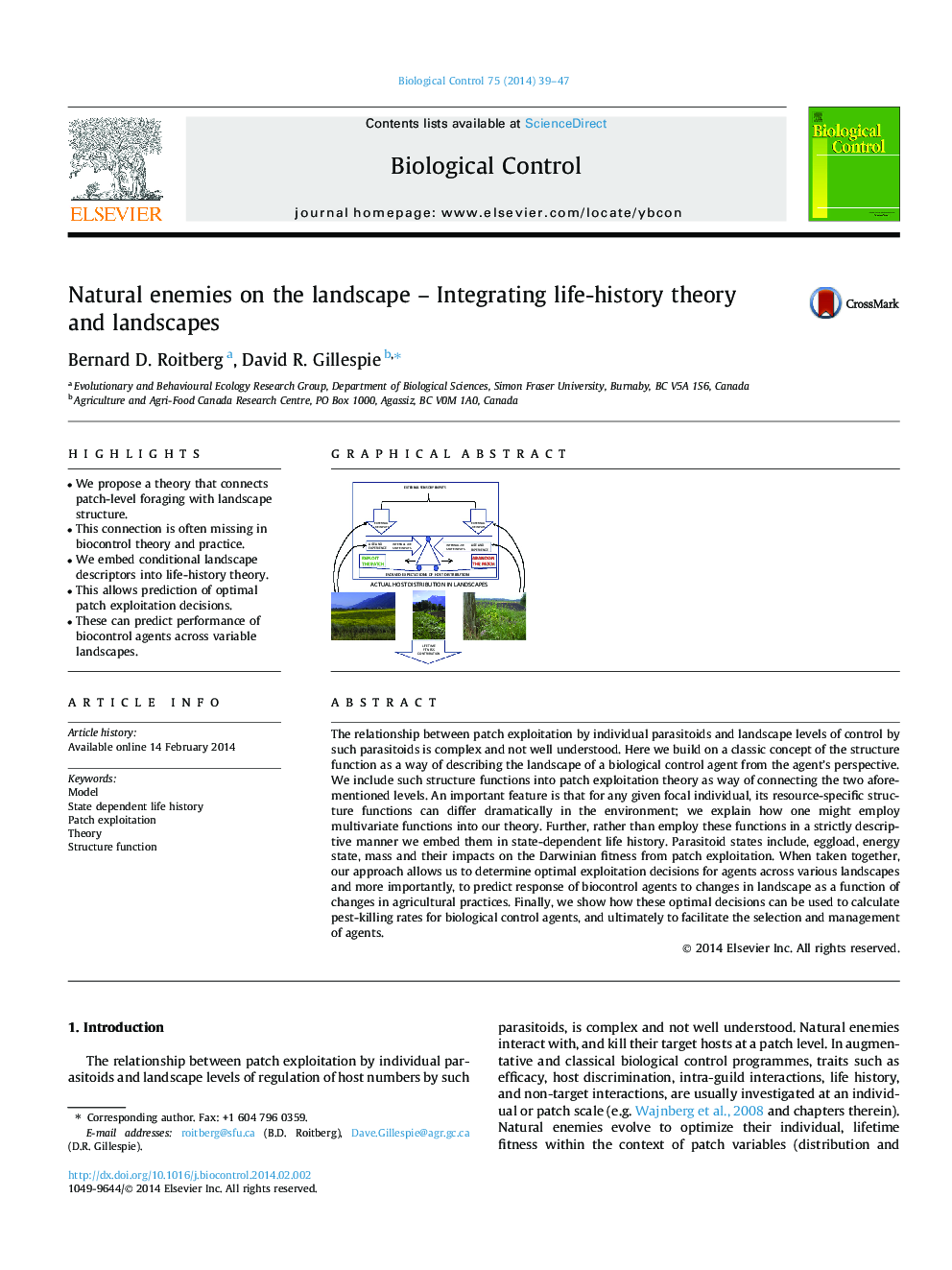| Article ID | Journal | Published Year | Pages | File Type |
|---|---|---|---|---|
| 4503901 | Biological Control | 2014 | 9 Pages |
•We propose a theory that connects patch-level foraging with landscape structure.•This connection is often missing in biocontrol theory and practice.•We embed conditional landscape descriptors into life-history theory.•This allows prediction of optimal patch exploitation decisions.•These can predict performance of biocontrol agents across variable landscapes.
The relationship between patch exploitation by individual parasitoids and landscape levels of control by such parasitoids is complex and not well understood. Here we build on a classic concept of the structure function as a way of describing the landscape of a biological control agent from the agent’s perspective. We include such structure functions into patch exploitation theory as way of connecting the two aforementioned levels. An important feature is that for any given focal individual, its resource-specific structure functions can differ dramatically in the environment; we explain how one might employ multivariate functions into our theory. Further, rather than employ these functions in a strictly descriptive manner we embed them in state-dependent life history. Parasitoid states include, eggload, energy state, mass and their impacts on the Darwinian fitness from patch exploitation. When taken together, our approach allows us to determine optimal exploitation decisions for agents across various landscapes and more importantly, to predict response of biocontrol agents to changes in landscape as a function of changes in agricultural practices. Finally, we show how these optimal decisions can be used to calculate pest-killing rates for biological control agents, and ultimately to facilitate the selection and management of agents.
Graphical abstractFigure optionsDownload full-size imageDownload as PowerPoint slide
